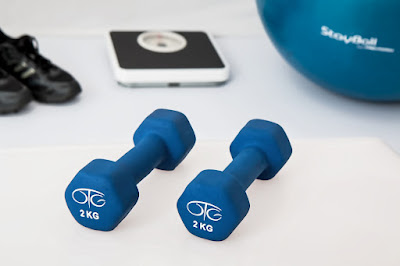SMART Goals for Successful Weight Loss and Fitness
When it comes to weight loss and fitness, it's easy to get overwhelmed by the amount of information available online.
One popular approach to achieving your fitness goals is to set SMART goals. (As you already know, SMART stands for Specific, Measurable, Achievable, Relevant, and Time-bound.)
Let's discuss how setting SMART goals can help you achieve successful weight loss and fitness, and examine a few examples of SMART goals that you can use to jumpstart your own journey.
Specific
The first step to setting a SMART goal is to make it specific. This means that your goal should be clear and unambiguous.
Instead of saying, "I want to lose weight," be specific about how much weight you want to lose and by when.
For example, "I want to lose 10 pounds in the next 2 months."
Measurable
The next step is to make your goal measurable. This means that you should be able to track your progress and determine if you are making progress towards your goal.
Using the previous example, "I want to lose 10 pounds in the next 2 months," you can track your progress by weighing yourself regularly and keeping track of your weight loss.
Achievable
The third step is to make your goal achievable. This means that your goal should be challenging, but not so difficult that you are setting yourself up for failure.
If you are currently sedentary, setting a goal of running a marathon in a month may not be achievable.
Instead, start with a smaller goal, such as walking for 30 minutes every day for a week.
Relevant
The fourth step is to make your goal relevant. This means that your goal should be important to you and align with your values and interests.
If you hate running, setting a goal to run a 5K may not be relevant to you.
Instead, consider setting a goal to try a new type of exercise that you enjoy, such as swimming or yoga.
Time-bound
The final step is to make your goal time-bound. This means that you should set a deadline for achieving your goal.
Using the previous examples, "I want to lose 10 pounds in the next 2 months" and "walking for 30 minutes every day for a week," you have set a specific timeframe for achieving your goal.
Examples
Example 1
"I want to lose 10 pounds in the next 2 months"
- Specific: Lose 10 pounds
- Measurable: Track weight loss progress
- Achievable: Losing 1-2 pounds per week is achievable for most people
- Relevant: Losing weight is important for overall health
- Time-bound: 2 months
To achieve this goal, you can create a calorie deficit by eating fewer calories than your body burns each day. This can be accomplished by tracking your food intake and making healthier food choices. You can also increase your physical activity by incorporating more exercise into your daily routine.
Example 2
"I want to run a 5K in 3 months"
- Specific: Run a 5K
- Measurable: Track running progress
- Achievable: Building up to running a 5K in 3 months is achievable with proper training
- Relevant: Running a 5K aligns with interest in fitness and goal of improving cardiovascular health
- Time-bound: 3 months
To achieve this goal, you can create a training plan that includes running workouts 3-4 times per week. You can also incorporate strength training and stretching into your routine to prevent injury and improve performance.
Example 3
"I want to complete a 30-day yoga challenge"
- Specific: Complete a 30-day yoga challenge
- Measurable: Track progress by completing daily yoga sessions
- Achievable: Completing a 30-day yoga challenge is achievable
- Relevant: Yoga aligns with interest in improving flexibility and reducing stress
- Time-bound: 30 days
To achieve this goal, you can find a 30-day yoga challenge online or through a yoga studio. You can also create a daily yoga routine by following a yoga video or attending a yoga class. Additionally, you can set reminders and make time in your schedule each day to ensure that you complete your daily yoga session.
Setting SMART goals can help you achieve successful weight loss and fitness by providing a clear and structured plan of action. By following the SMART framework, you can create achievable goals that are tailored to your individual needs and interests.
Remember to start small and build up gradually, and to celebrate your successes along the way.
An if you are serious about achieving your weight loss and fitness goals, setting SMART goals is a great place to start.
By following the five steps of the SMART framework and incorporating them into your daily routine, you can create a clear roadmap towards success.
Whether you want to lose weight, run a 5K, or complete a yoga challenge, setting SMART goals can help you get there. Start small, track your progress, and stay motivated – success is within your reach.
(The image source is https://www.pexels.com/photo/color-colour-fitness-health-39671/ )




Comments
Post a Comment